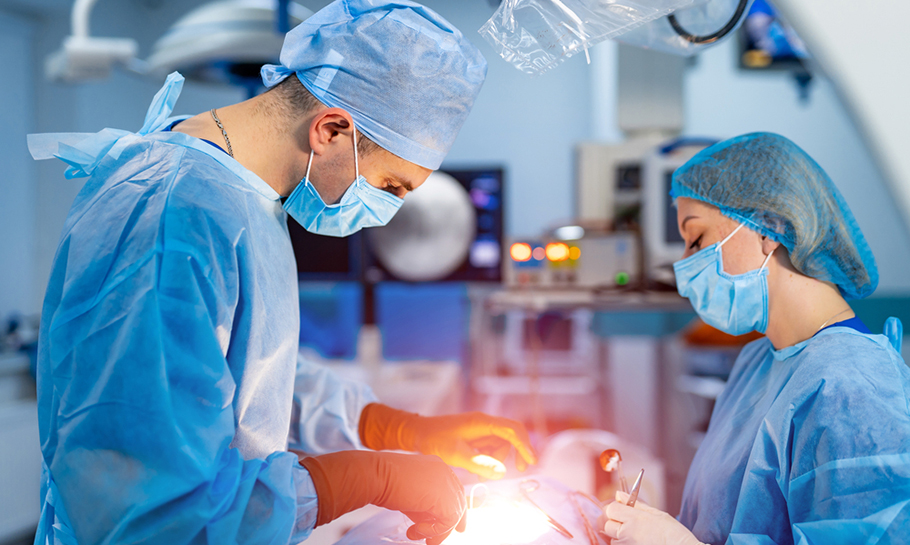Cardiothoracic Surgery

Bypass Surgery
Bypass surgery restores proper blood flow to the heart when coronary arteries are blocked or damaged. During this four- to five-hour procedure, surgeons take a healthy vein—often from the leg—and use it to create a new route for blood to bypass the blockage. This ensures your heart receives the oxygen it needs to function properly. All bypass surgeries are performed at SIH Memorial Hospital of Carbondale.
Open-Heart Valve Surgery
Heart valves control blood flow through the heart’s four chambers. If a valve becomes stiff or leaky (causing blood to flow backward), it may need to be repaired or replaced. Our experienced cardiovascular surgeons specialize in valve repair and replacement, with over 20 years of expertise in aortic valve procedures.
SIH also offers a minimally invasive valve surgery called mini-AVR, which requires only a small incision.
What is Mini-AVR?
Traditionally, aortic valve replacement required a median sternotomy, a large 10- to 12-inch incision down the center of the chest, followed by opening the breastbone. Mini-AVR is a newer, less invasive alternative. Instead of a large cut, surgeons make a small 2- to 3-inch incision between the ribs on the right side of the chest. This approach allows access to the heart without fully opening the breastbone.
How Mini-AVR Works
During the procedure, the surgeon removes the damaged valve and replaces it with an artificial one using the parachute technique, which ensures precise placement and proper function.
Benefits of Mini-AVR:
- Smaller incision and less trauma
- Faster recovery time
- Reduced pain and scarring
- Shorter hospital stay
Your doctor will determine if mini-AVR is right for you. Advancements like these allow for safer procedures with quicker recovery, so you can get back to your daily life sooner.
Thoracic Surgery
Thoracic surgery focuses on treating conditions affecting the lungs and chest. SIH offers several advanced thoracic procedures, including lobectomy, wedge resection, and robotic-assisted thoracic surgery.
Lobectomy
A lobectomy is the surgical removal of a diseased or cancerous lobe of the lung. It is often performed to treat lung cancer and can improve lung function in certain conditions.
Wedge Resection
A wedge resection removes a small, wedge-shaped portion of lung tissue containing a tumor or diseased area. This procedure is an option for early-stage lung cancer or small lung nodules.
Robotic-Assisted Thoracic Surgery
SIH offers minimally invasive robotic-assisted thoracic surgery, which allows for greater precision and smaller incisions. Using robotic technology, surgeons can operate with enhanced accuracy, leading to:
- Less pain and scarring
- Shorter hospital stays
- Faster recovery time
Your doctor will help determine the best surgical approach for your condition. At SIH, we are committed to offering the most advanced treatment options to ensure the best possible outcomes.